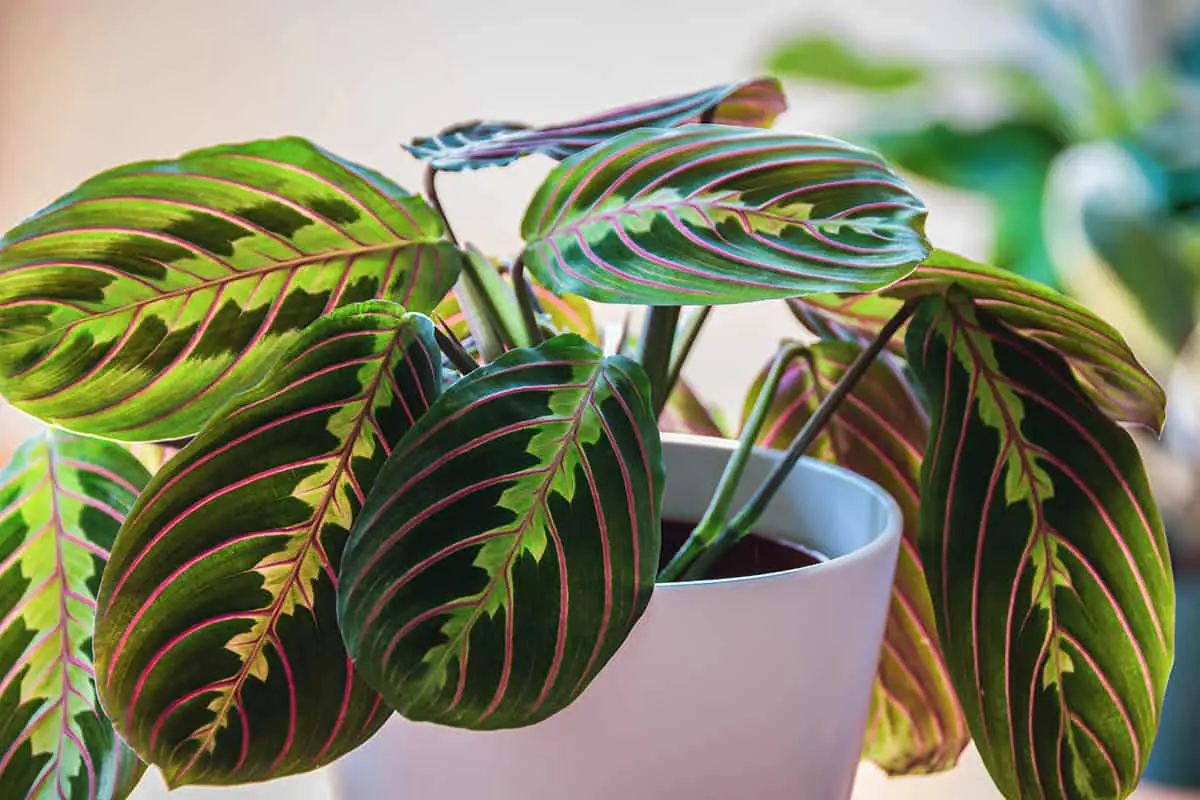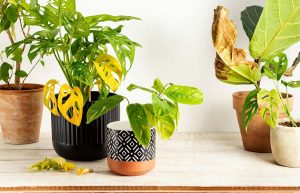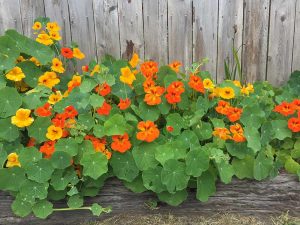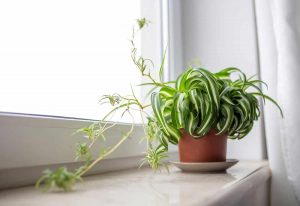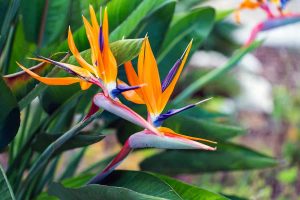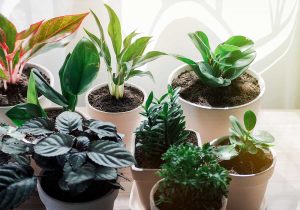You’ve recently added a prayer plant to your collection, drawn by its striking, patterned leaves that fold up at night. But now, you’re wondering how to keep it looking its best. With the right care, your prayer plant can thrive and remain a beautiful focal point in your home. Find out how to care for and maintain your prayer plant to ensure it stays healthy and vibrant.”
Table of Contents
Light
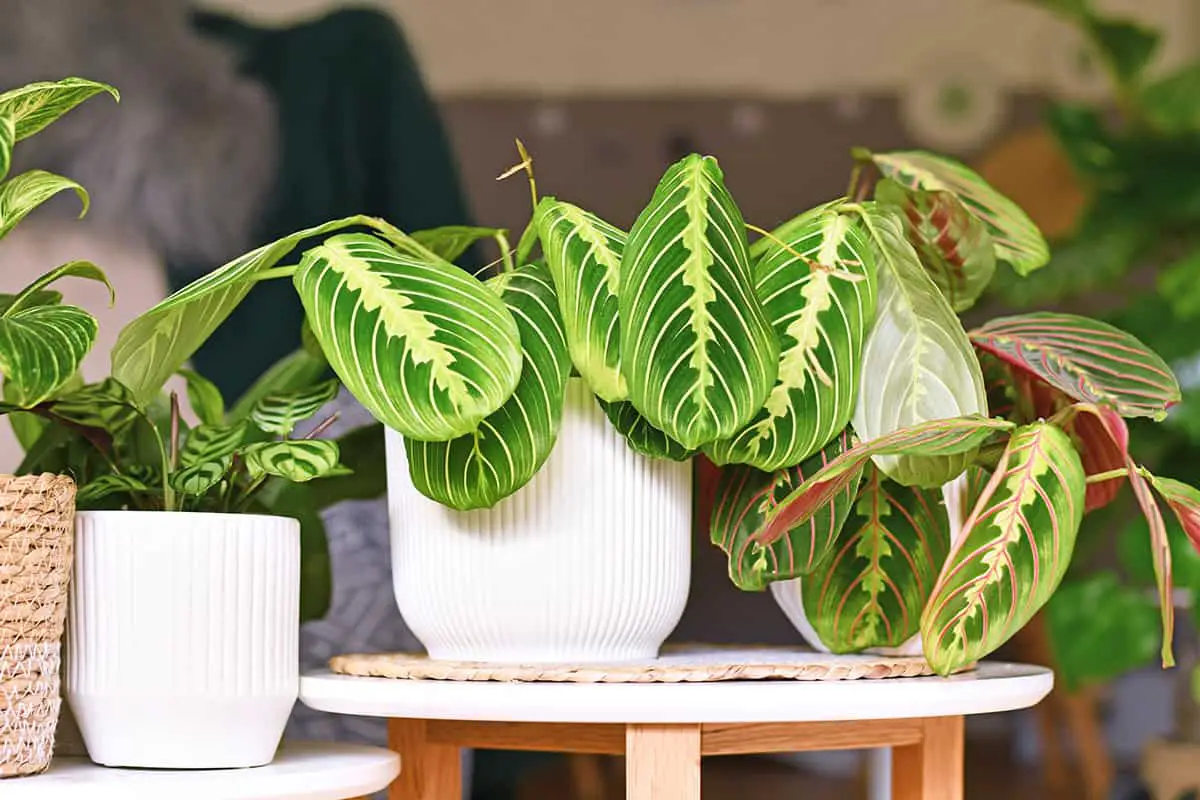
Prayer plants thrive in bright, indirect sunlight. Position your plant where it can avoid harsh, direct rays, especially in the hot afternoon. Morning light is gentler and can be beneficial. The leaves fold at night, resembling hands in prayer, which can be a sign of good light intake.
Excessive direct sunlight may damage the leaves, causing them to fade or develop unsightly marks. Look for a spot that mimics the dappled light of a rainforest floor for optimal growth. Windows with eastern exposure often provide such conditions.
If natural light is low, consider using a grow light for supplemental illumination. This ensures your prayer plant receives the right amount of light, even in less-than-ideal indoor conditions. Adjust the distance based on the light’s intensity to avoid burning the foliage.
Monitor your plant’s response to its lighting conditions. Leaves turning light green or yellow may indicate too much light, whereas leggy stems or lack of foliage color can signal insufficient light. Adjust your plant’s position as needed to maintain the right balance.
Soil
Prayer Plant care starts with the soil. You need a potting mix that is rich in organic material. Good soil ensures your Prayer Plant gets the right amount of nutrients and water. Aim for a mix that retains moisture, yet drains well to prevent overwatering.
Your Prayer Plant thrives in a balance of airiness and moisture retention. Choose a blend of peat, perlite, and potting soil. This mixture helps the roots to breathe and supports healthy growth. Keep the soil moist, but let the top layer dry out slightly before watering again.
In winter, allow the soil to dry a bit more between waterings. This practice matches the plant’s natural growth cycle. It’s essential to mimic the plant’s native environment for optimal health. Proper soil conditions mirror the forest floors of tropical rainforests, where Prayer Plants originate.
Remember to avoid soils that compact or hold too much water. Overly wet conditions can lead to root rot, which damages the plant.
Watering
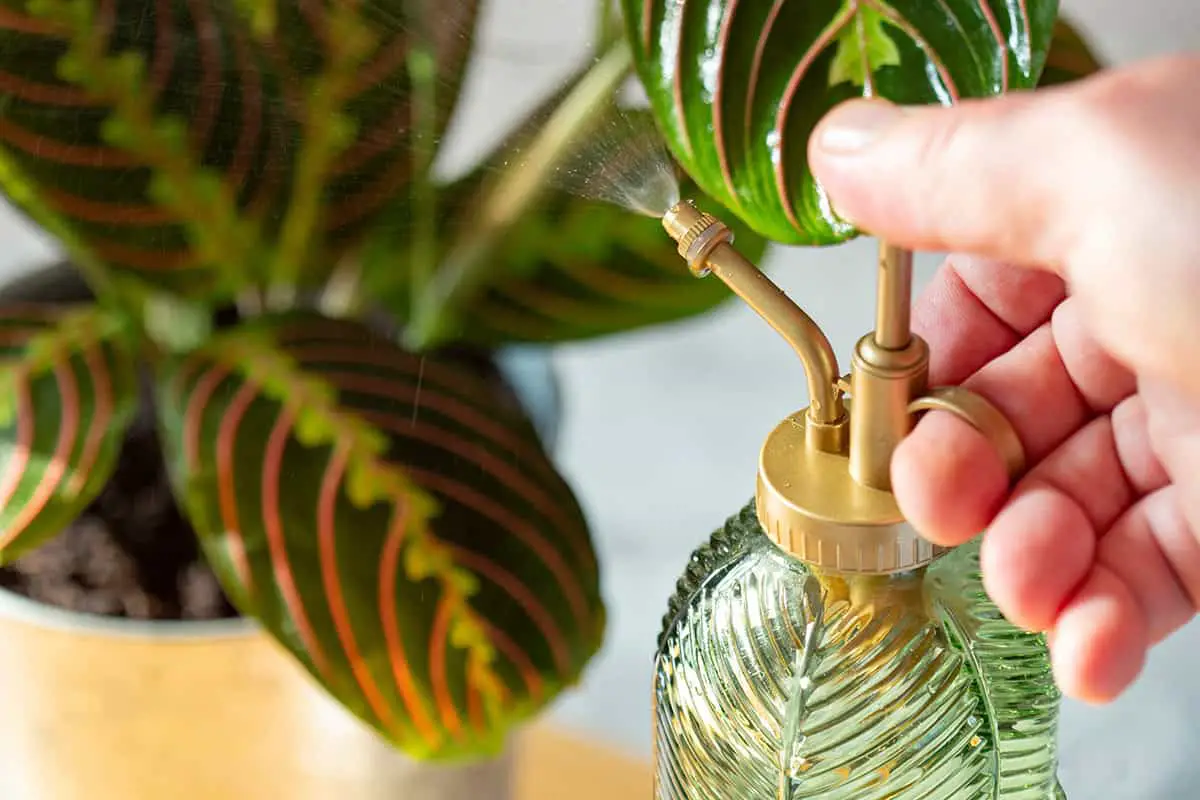
Prayer plants require consistent moisture to thrive. Begin by watering your prayer plant when the top inch of the soil feels dry. This will typically be once a week, but you may adjust the frequency depending on your home’s humidity and temperature.
During the growing season, which is spring and summer, keep the soil moist, but not soggy. Standing your prayer plant on a bed of wet pebbles can also increase humidity around it, as suggested by North Carolina Extension Gardener Plant Toolbox. Ensure the pot has good drainage to prevent water from pooling at the bottom which can lead to root rot.
In winter, water less often. The plant slows down in cooler temperatures and excess water could harm it. Allow the topsoil to dry out slightly before watering again. Use room-temperature water to avoid shocking the plant’s roots.
Temperature and Humidity
Caring for prayer plants requires attention to their temperature and humidity preferences. Your prayer-plant flourishes in warm and humid conditions. Aim to keep your indoor environment similar to a tropical climate for best results. The ideal temperature range for your prayer plant is between 60-80°F (15-27°C). Avoid temperatures below 55°F (13°C), as cold drafts can harm the plant.
Maintaining high humidity is also crucial for prayer plants. They thrive in environments with 50%-60% humidity. In drier conditions, you can increase humidity around your prayer plant. Some effective methods include placing your plant on a tray filled with wet pebbles, using a humidifier, or positioning it in naturally humid places like your kitchen or bathroom. It’s important to keep the soil consistently moist but not waterlogged. Remember to use room-temperature water to avoid shocking the plant’s roots.
To ensure your prayer plant’s well-being, monitor the temperature and humidity of its surroundings regularly. Use a thermometer and hygrometer to keep track of these conditions.
Fertilizer
When you care for prayer plants, fertilizer is crucial. They thrive with regular feeding. During their growing season, which spans from April to August, you should fertilize your prayer plants monthly. Use a balanced liquid fertilizer for the best results. It provides an even distribution of nutrients.
It’s important to get the concentration right. Too much fertilizer can harm the plants. Follow the recommended dosage on the product label. If in doubt, it’s safer to dilute the fertilizer more than the instructions suggest.
Prayer plants need a range of nutrients. These include nitrogen, phosphorus, and potassium, often found in standard houseplant fertilizers. These key nutrients support leaf growth and overall health.
Remember to keep the soil moist but not wet. Over-watering combined with excess fertilizer can lead to root problems. Watering your prayer plants before fertilizing can help prevent root burn.
During the winter months, fertilizer is less necessary. Prayer plants grow slower in cooler temperatures. Hence, reduce feeding to once every other month or pause it altogether until spring.
Propagation
Prayer plant propagation is simple. You can grow new plants from cuttings or by dividing the roots. This method is effective and keeps the plant healthy.
Taking Cuttings: Choose a healthy stem with a few leaves. Cut below the node, where leaves attach. Place the cutting in water until roots form. Roots should appear in a few weeks.
Dividing Roots: Gently remove your prayer plant from its pot. Separate the roots into smaller sections. Each section should have leaves and roots. Replant in moist soil and maintain the same care as before.
Place your new plants in a warm, humid spot with indirect light. Keep the soil moist, but not soggy.
Pruning
Prayer Plant care includes regular pruning to maintain its health and appearance. You will trim dead or yellowing leaves to encourage new growth. Use clean, sharp scissors for cuts that help prevent disease. Your plant’s size and shape may also benefit from occasional trimming.
Pruning can stimulate denser growth, making your Prayer Plant bushier. Aim to prune in the early spring for the best results. Remove only small amounts of growth at a time. This avoids shocking the plant and allows for gradual shaping.
Be aware of the prayer plant’s response to your care. Over-pruning can lead to stress. Thus, observe your plant after trimming, looking for signs of new development.
Potting and Repotting
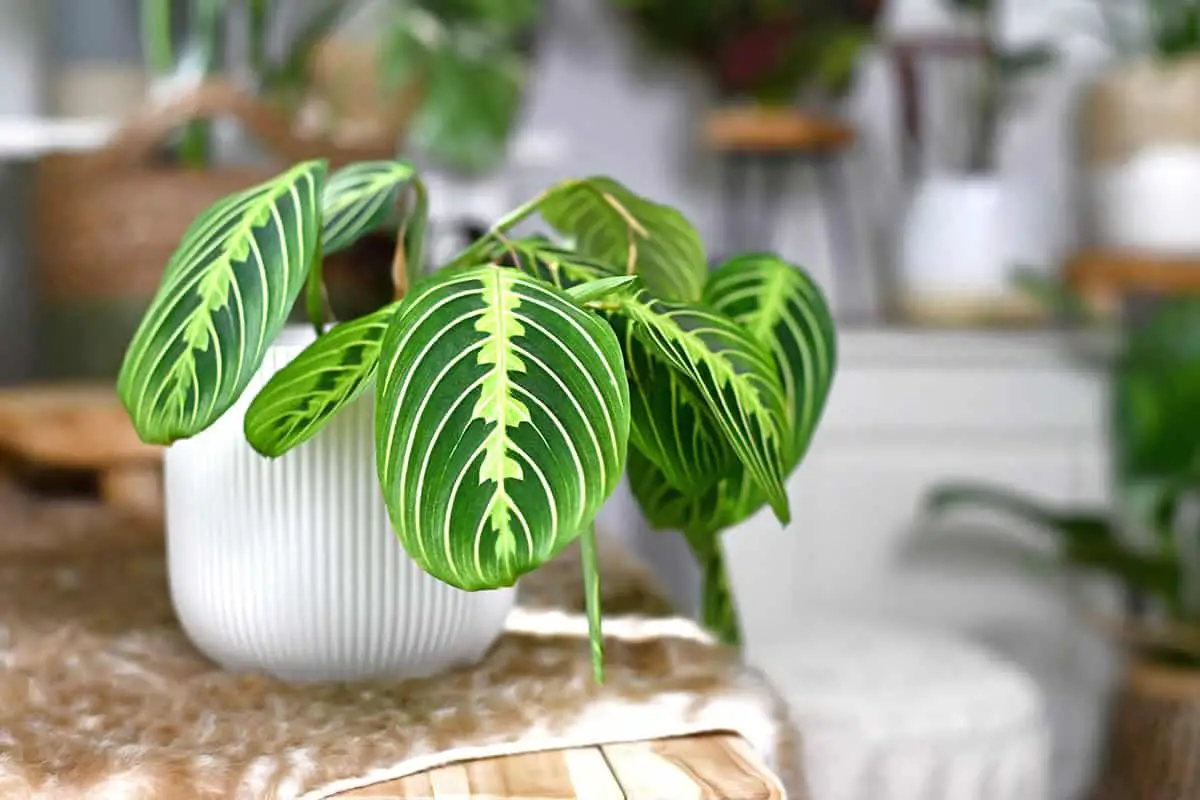
When your prayer plant shows signs it may need repotting, choose a new pot. The pot should be one to two inches wider than the current one. This gives your plant room to grow. Start by gently removing the prayer plant from its current container. Be careful not to damage the roots.
Next, inspect the root ball. Look for roots that are very long or circling tightly. These can be trimmed slightly. Place a shard over the pot’s drainage hole to prevent soil from escaping. Then, add fresh potting mix to the pot. Lift the prayer plant and center it in the new pot.
You’ll want to add more mix around the roots. Gently press the soil to remove air pockets. Leave about an inch of space below the rim for watering. Water the prayer plant to settle the new soil. Ensure the soil stays moist but not soggy.
It’s not always about size when considering repotting. If the plant dries out quickly or you see a crust of salt on the soil surface, it also signals it’s time for fresh soil. These indicators help you decide when to repot your prayer plant. Do this task every two to three years to keep your plant healthy.
Common Problems & Troubleshooting
Prayer plants sometimes face challenges indoors. If you notice leaf curling, your prayer plant might be experiencing dryness. Ensure the soil remains slightly damp. Check for root rot when wilting leaves. This is often due to overwatering. Keep the soil moist but not wet.
Yellow leaves often signal overwatering or poor drainage. Make sure your pot has holes at the bottom. Adjust your watering routine to allow the top soil layer to dry out slightly. If your prayer plant’s leaves have brown tips, it could require more humidity. Try misting the leaves or place the pot on a tray of wet pebbles.
Drafts and sudden temperature shifts can stress prayer plants. Keep your plant away from air vents and exterior doors. The ideal temperature range for these plants is between 65 to 75 degrees F. If your plant does not flower, don’t worry. Prayer plant flowers are rare indoors, and they are typically grown for their foliage.
Keep an eye out for pests like spider mites or mealybugs. They can be managed with neem oil or insecticidal soap.
Prayer Plant Varieties
Prayer plants offer you a range of varieties, each with distinctive leaf patterns and colorations. These varieties enhance indoor aesthetics while requiring similar care and conditions.
Maranta Leuconeura ‘Erythroneura’ (Red Prayer Plant)
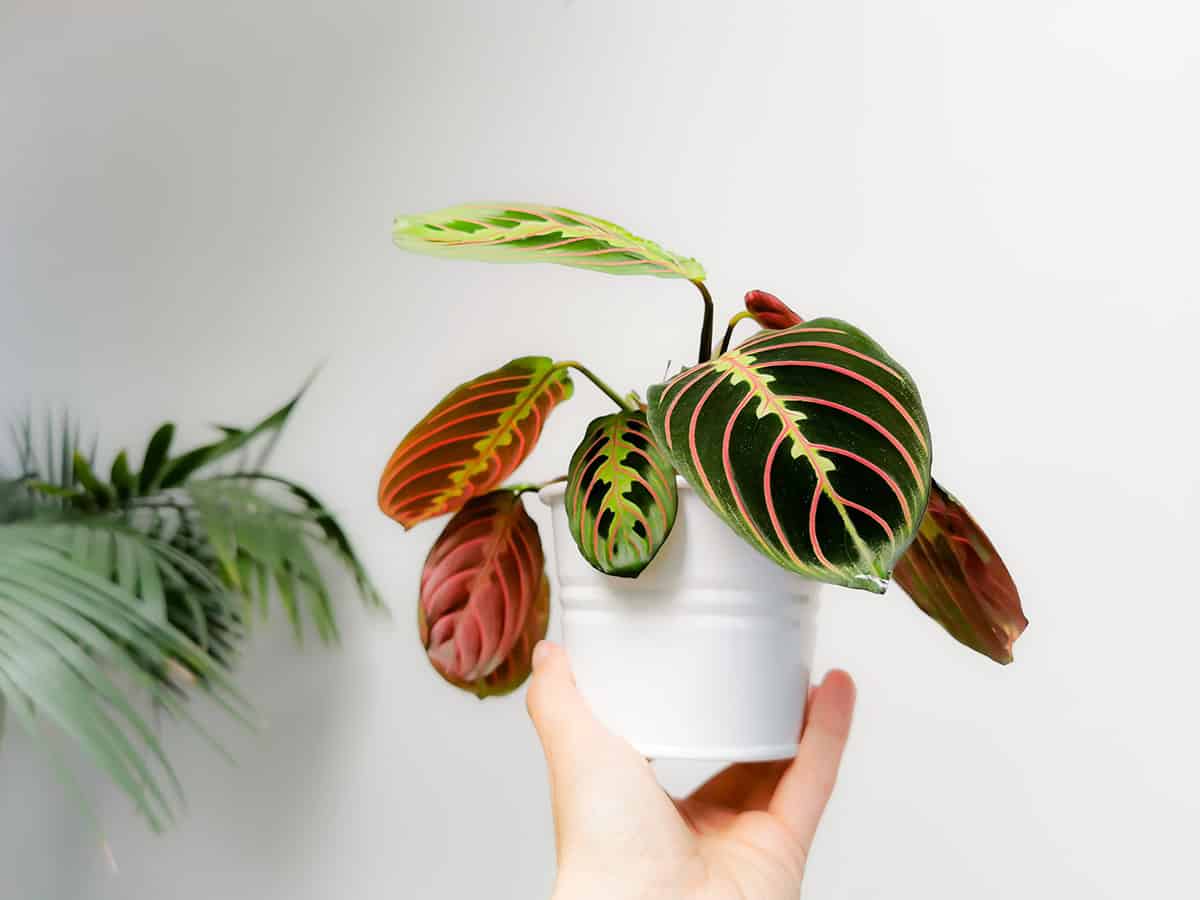
The Red Prayer Plant is known for its striking red veins against a green background. This variety thrives in well-draining soil and benefits from consistent moisture.
Maranta Leuconeura ‘Kerchoveana’ (Green Prayer Plant)
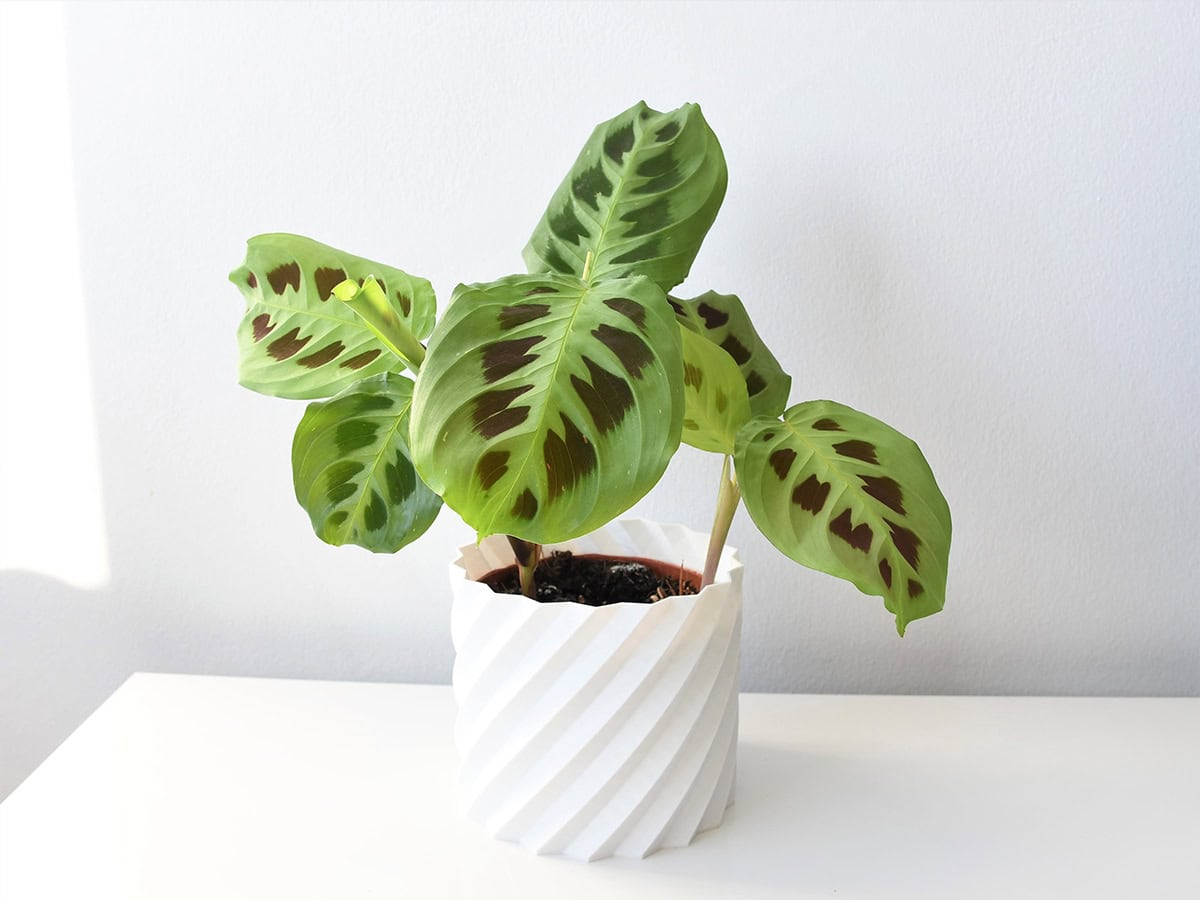
Your Green Prayer Plant presents broad green leaves with a pattern of dark spots. Keep this plant in bright, indirect light to maintain its vivid colors.
Maranta Leuconeura ‘Lemon Lime’
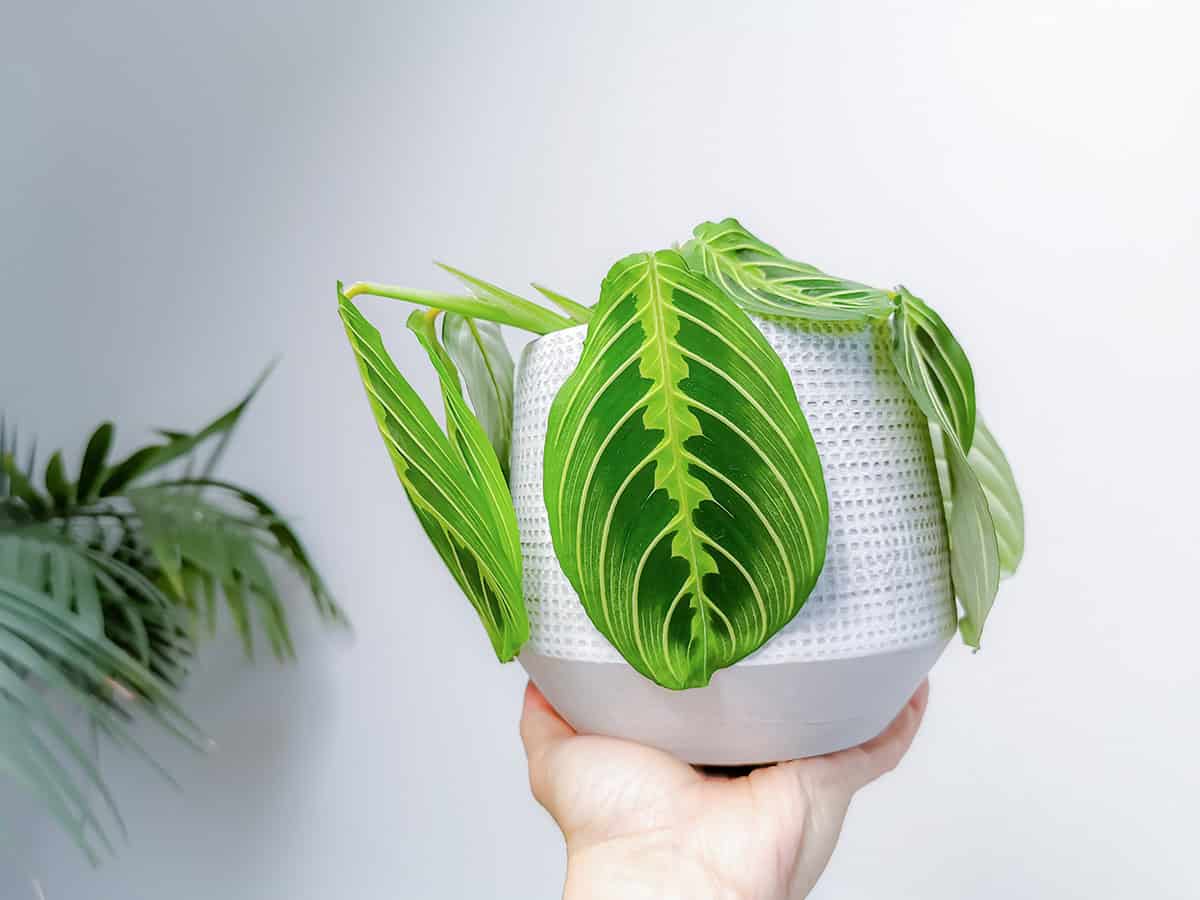
The Lemon Lime variant displays a playful mix of yellow and green stripes. This plant prefers higher humidity levels to sustain its vibrant foliage.
Maranta Leuconeura ‘Black’
Maranta Leuconeura ‘Black’ offers a dramatic look with its dark green to almost black leaves. It’s crucial to provide this plant with a warm environment to flourish.
Maranta Leuconeura ‘Silver Feather’
The ‘Silver Feather’ stands out with silvery patterns on a dark green canvas. This variety does best with filtered water to protect its delicate leaf patterns from harsh minerals.
